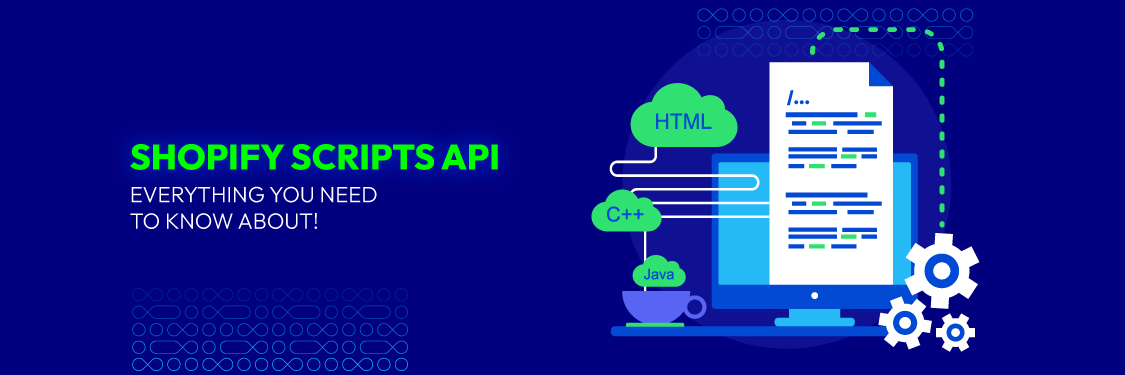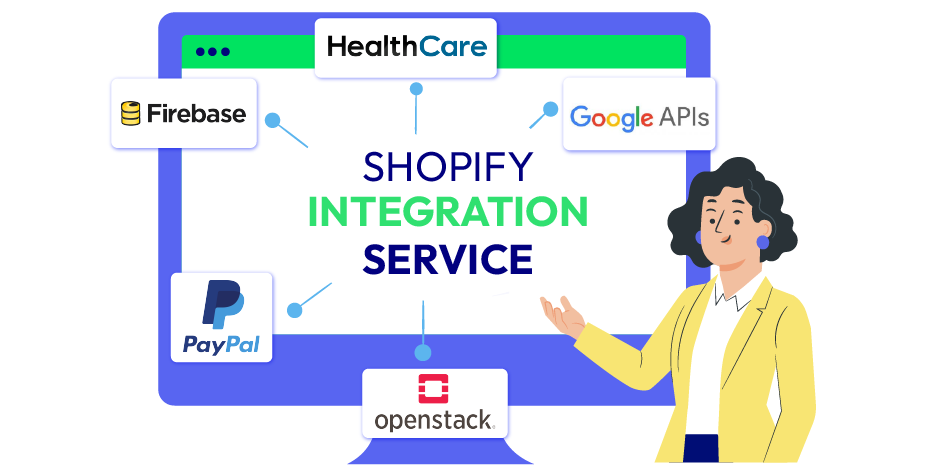Shopify Scripts API: Everything you need to know about!
Summer Nguyen | 12-04-2023

To enhance your business, it’s essential to explore the potential of Shopify Scripts. This robust resource can simplify processes, nurture customer loyalty, and propel your business toward success.
Make sure not to miss out on this article, as it provides valuable insights on leveraging Shopify Scripts and implementing them in your business immediately.
What is the Shopify Script API?
Shopify Scripts API are custom pieces of code that Shopify store owners can use to customize and extend the functionality of their online stores. These scripts are typically written in a specialized scripting language provided by Shopify. The main types of scripts in Shopify are Line Item Scripts, Payment Scripts, and Shipping Scripts.

Why does Shopify Scripts API matter?
Shopify Scripts API is a significant and valuable feature for Shopify store owners for several reasons:
- Customization: Shopify Scripts enables businesses to tailor their online stores to meet specific needs. This customization extends to pricing, payments, and shipping, allowing for a more personalized and unique customer experience.
- Dynamic Pricing: Line Item Scripts, a type of Shopify Script, can be used to implement dynamic pricing strategies. For example, you can create tiered discounts, bundle deals, or product-specific promotions, helping to boost sales and encourage larger purchases.
- Enhanced User Experience: By customizing the checkout process with Payment Scripts, you can offer alternative payment methods and improve the user experience. This has the potential to lower the incidence of abandoned shopping carts and boost the number of successful conversions.
- Shipping Flexibility: Shipping Scripts allow you to offer various shipping options and rates based on specific criteria like order value, location, or product type. This flexibility can be a key selling point for your customers.
- Competitive Advantage: Shopify Scripts API provides a competitive advantage by allowing businesses to implement unique pricing and shipping strategies that can set them apart from competitors in the e-commerce space.
- Efficiency: Shopify Scripts can automate tasks such as discount application and shipping rate calculation, saving time and reducing errors. This can be particularly important for businesses with high transaction volumes.
- Revenue Growth: Businesses can potentially increase sales and revenue by using Shopify Scripts API to create compelling offers and promotions. A well-crafted discount or pricing strategy can encourage repeat purchases and customer loyalty.
- Adaptability: Shopify Scripts can be adjusted as business needs change. This adaptability is crucial for evolving businesses, allowing them to fine-tune their e-commerce strategies continuously.
- Analytics and Data Insights: Shopify Scripts API can provide valuable data insights, such as which promotions are most effective, which payment methods are preferred, and how shipping options impact sales. This information can inform future marketing and sales strategies.
- User Retention: Customized pricing and promotions through Shopify Scripts can foster customer loyalty and retention. Customers who feel they are getting personalized deals are more likely to return for future purchases.
In summary, Shopify Scripts API matter because they empower e-commerce businesses to customize, optimize, and differentiate their online stores. This level of customization and control over pricing, payments, and shipping is vital for businesses seeking to distinguish themselves in a fiercely competitive digital marketplace and provide an excellent customer experience.
Want even more control over your storefront experience? Consider building a Shopify frontend using React to fully customize the user interface alongside your checkout logic.
3 Main Shopify API Script types
Shopify offers 3 main types of scripts to tailor and improve the features of your e-commerce website:
1. Line item scripts
- Line item scripts allow you to modify and customize individual items in a customer’s shopping cart.
- You can create custom pricing rules, apply discounts, or set specific conditions that trigger adjustments to the price or properties of items in the cart.
- Examples of usage include “Buy One, Get One” promotions, volume discounts, or special offers for specific products.
2. Shipping scripts
- Shipping scripts allow you to customize the shipping rates and options offered to customers during checkout.
- You can set specific shipping rules based on location, order total, or product type. This customization can help you offer competitive shipping rates and options.
- Shipping scripts are valuable for businesses looking to optimize their shipping strategy and provide transparent shipping options to customers.
3. Payment scripts
- Payment scripts provide control over the available payment methods at checkout.
- You can use payment scripts to restrict or modify payment options based on certain conditions. For instance, you can limit specific payment methods for certain products or offer alternative payment options.
- Payment scripts are particularly useful for businesses that manage multiple payment gateways and customize their checkout process.
These three script types provide Shopify store owners with the flexibility and tools to create a tailored and unique e-commerce experience for their customers.
By using line item, payment, and shipping scripts effectively, businesses can implement various pricing, payment, and shipping strategies that meet their specific needs and help drive sales and customer satisfaction.
How to use Shopify Scripts API
To use the Shopify Scripts API, you just need to follow very simple steps. Below is a general outline of how to create new scripts on your Shopify Store:
Step 1: Navigate to the Shopify Admin and subsequently select “Apps.”
Step 2: Launch the Script Editor.
Step 3: Click the “Create Script” option.
Step 4: Pick your desired script category from the “Select a script template” dialog, which could be “Line items,” “Shipping rates,” or “Payment gateways.”
Step 5: Opt for a “Blank Template” or select a pre-existing template as your initial reference.
Step 6: Click “Create Script” and specify the script category you’ve selected.
Step 7: Provide a descriptive name for your script in the Title box.
Step 8: Access the “Code” section, which opens the Ruby source code console.
Step 9: Input your script’s code, using the Shopify Scripts API documentation as your reference.
Step 10: Choose “Run Script” to execute your new script.
Step 11: After completing your script, you can either select “Save Draft” to save it as an unpublished script or choose “Save and Publish” to create and publish the script.
Shopify Integration Service
Let's seamlessly connect your store to powerful tools and platforms and accelerate sales like never before!
Learn more
Best practices for efficient Shopify API Script development
Efficient development of Shopify API scripts is crucial for creating powerful and performant e-commerce solutions.
Shopify API scripts, such as those used in custom apps or themes, enable you to customize the platform’s behavior and enhance the user experience. Here are some best practices for efficient Shopify API script development:
1. Plan and document your scripts
Planning and documenting scripts are fundamental to efficient Shopify API script development as they provide a structured approach to the project.
Planning ensures a clear understanding of the project’s goals, scope, and requirements, helping developers work more efficiently and avoid scope creep. Documentation, on the other hand, reduces errors and simplifies troubleshooting. More than that, it supports collaboration, knowledge transfer, and long-term maintenance.

2. Use version control
Version control is crucial for efficient Shopify API script development because it offers several benefits. It helps track changes to your codebase, facilitates collaboration among team members, and ensures a history of code modifications for easier debugging and issue resolution.
To use version control effectively, start by choosing a version control system (e.g., Git) and setting up a repository for your project. Regularly commit changes with clear and meaningful messages. Establish branches to develop new features or address bug fixes, and use pull requests for code review and integration.
Establish a workflow that aligns with your development team’s needs and practices. By adopting version control, you ensure code integrity and collaboration, making it easier to follow best practices and maintain an efficient Shopify API script development process.
3. Code modularization
Code modularization enhances code organization, reusability, and maintainability. Modular code is easier to understand and update, minimizing the chances of errors and accelerating the pace of development.
In the context of Shopify, it allows you to separate different functionalities into modules or libraries, making it simpler to add new features, fix issues, and scale the application.
To use code modularization effectively, break down your script into smaller, logically separated functions or classes, each responsible for a specific task. Ensure that these modules have clear and well-defined interfaces.
This approach not only aligns with best practices but also simplifies collaboration in team settings and supports code reuse across different projects, ultimately leading to more efficient Shopify API script development.
4. Optimize for performance
Optimizing for performance is a cornerstone of efficient Shopify API script development. It directly impacts the user experience, page load times, and overall store efficiency. In the competitive e-commerce landscape, fast and responsive stores are crucial for retaining customers and boosting conversion rates.
By optimizing your scripts, you can reduce API requests, and cache data, and minimize computational overhead, guaranteeing the smooth and efficient operation of your application. Efficient scripts help prevent slowdowns, which can lead to cart abandonment and decreased customer satisfaction.
Furthermore, improved performance can also contribute to better search engine rankings and a more positive brand image, making performance optimization an integral part of best practices for Shopify API script development.
5. Implement caching
Implementing caching is a vital element that businesses must consider if they want to attain best practices for Shopify API script development. It dramatically improves performance and minimizes server load.
Caching involves temporarily storing frequently used data, so it can be quickly retrieved without resource-intensive operations like database queries or API requests.
In an e-commerce environment, where real-time data may not be necessary for every user interaction, caching can significantly reduce page load times and enhance the customer experience.
By storing rendered content, product information, or other data that changes infrequently, your script can respond faster to user requests, leading to improved store responsiveness, reduced server costs, and a more satisfying shopping experience for customers.
6. Handle errors gracefully
Another crucial aspect of best practices in Shopify API script development is handling errors gracefully. This factor ensures the stability and reliability of your application.
In a live e-commerce environment, errors are bound to occur, whether due to unexpected data, network issues, or code bugs. By handling errors properly, you can prevent script failures, improve the user experience, and maintain customer trust.

Effective error handling ensures that your Shopify API script continues to run smoothly, even in less-than-ideal conditions, contributing to an efficient and dependable online store.
7. Thoroughly test your scripts
Thoroughly testing your scripts helps identify and rectify issues before they reach the production environment, reducing the risk of bugs or glitches that could disrupt the customer experience.
To achieve this, use a combination of unit tests to verify individual components, and end-to-end tests to validate the entire script’s functionality. Additionally, simulates different scenarios and edge cases to ensure robustness. Continuously automate testing processes, integrate them into your development pipeline, and regularly run tests to catch problems early.
Comprehensive testing guarantees that your script behaves as expected, provides a seamless user experience, and minimizes the need for time-consuming and costly bug fixes after deployment, ultimately contributing to efficient development practices.
8. Utilize webhooks for real-time updates
Another best practice in efficient Shopify API script development is utilizing webhooks for real-time updates. It eliminates the need for constant polling and keeps your application responsive.
Webhooks allow your script to receive immediate notifications when specific events occur in the Shopify store, such as new orders or product updates. By reacting to these events in real time, your script can provide timely and relevant information to users, enhancing their experience.
To implement webhooks effectively, first, set up the webhook endpoints in your script to listen for specific events. Ensure that you have adequate error handling and authentication to secure the communication.
With webhooks, you can improve the efficiency of your application by reducing the load on your server. Plus, you can create a more responsive and user-friendly experience in your Shopify store.
9. Limit API requests
Limiting API requests is crucial to efficient Shopify API script development. It minimizes the strain on Shopify’s servers, reduces latency, and helps you stay within Shopify’s rate limits.
Shopify imposes API rate limits to ensure fair usage across all applications. Exceeding these limits can result in throttling or temporary suspensions of your application. By optimizing your script to make fewer, well-structured API requests and utilizing techniques like batch processing and caching, you can prevent performance bottlenecks.
Moreover, you can strive to maintain a positive relationship with Shopify, reducing the risk of service disruptions and ensuring a smooth and efficient operation of your e-commerce store.
10. Implement rate limiting and retry strategies
If you want to ensure that your application complies with Shopify’s rate limits and script gracefully can handle transient issues, like network errors or server hiccups, you should implement rate limiting and retry strategies
To do this, establish a rate-limiting mechanism in your code that adheres to Shopify’s guidelines, limiting the number of requests made within specific timeframes. Additionally, incorporate retry logic to handle transient failures.

These strategies ensure that your script operates smoothly and maintains a good relationship with Shopify’s servers, reducing the risk of service disruptions and downtime.
11. Documentation and comments
Documentation and comments are key factors that enhance the understanding and maintainability of your codebase. Comprehensive documentation provides clear guidelines on using and interacting with your script, reducing the learning curve for other developers or even your future self.
Well-placed comments within the code explain complex logic, assumptions, and the purpose of functions or blocks, making it easier to troubleshoot and modify the script. In a collaborative environment, documentation ensures everyone is on the same page, and comments help convey the rationale behind certain decisions or implementations.
This practice streamlines development, reduces errors, and supports efficient maintenance, ultimately contributing to best practices for Shopify API script development.
12. Security considerations
Security considerations are paramount as they safeguard sensitive customer data and the integrity of your e-commerce store. Neglecting the implementation of adequate security measures can lead to data breaches, financial losses, and a damaged reputation.
Best practices include secure authentication and authorization mechanisms, data encryption, input validation, and safeguarding your system from prevalent web vulnerabilities such as SQL injection and cross-site scripting (XSS).
Regularly updating and patching dependencies, monitoring for security threats, and adhering to Shopify’s security guidelines are also essential.
By prioritizing security, you protect your business and ensure a stable and efficient Shopify API script development process, free from security vulnerabilities that can disrupt operations and erode customer trust.
13. Regularly update and maintain
As for ensuring your application remains efficient and up-to-date, regularly updating and maintaining your Shopify API script is a best practice.
As the Shopify platform evolves and new features are introduced, keeping your script current with the latest APIs and technologies ensures compatibility and optimal performance. Furthermore, regular maintenance helps identify and fix issues, enhance security, and improve overall code quality.
By staying on top of updates and maintenance, you reduce the risk of script failures, ensure smooth operations, and demonstrate your commitment to providing a seamless and efficient user experience, ultimately supporting best practices for Shopify API script development.
14. Monitor script performance
Monitoring script performance helps you identify and address performance bottlenecks, errors, and inefficiencies in real-time while maintaining best practices for Shopify scripts API.
To do this, use monitoring tools that track key performance indicators, such as response times, server resource utilization, and error rates. Set up alerts to notify you of significant deviations from expected performance levels. Continuously analyze the data to optimize your script’s efficiency, ensuring it delivers a fast and reliable user experience.

15. Stay informed and engage with the community
The final essential key factor for efficient Shopify API script development that can not be missed is staying informed and actively engaging with the Shopify developer community. These practices keep you updated on the latest best practices, trends, and changes in the Shopify ecosystem.
Shopify is a dynamic platform that evolves, and staying informed ensures your scripts remain relevant and compatible. Actively participating in the community provides you with the opportunity to gain insights from the experiences of others, share knowledge, and access valuable resources and insights.
By actively participating in forums, attending webinars, and following official updates, you can adapt your scripts to new requirements, solve challenges more effectively, and maintain a high level of expertise, which is crucial for efficient Shopify API script development.
The bottom line
With the Shopify Scripts API, the possibilities are endless, and your e-commerce store’s success knows no bounds.
So, dive in, experiment, and watch your online business thrive with the creative and strategic use of custom scripts. The future of your online store is limited only by your imagination and your ability to leverage the Shopify Scripts API to its full potential.





